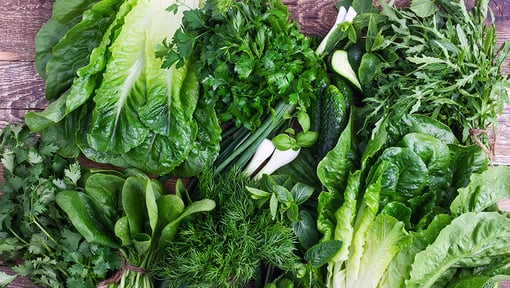How’s your sandwich game looking? If you’re still eating cold cuts on white bread, it may be time to take it up a notch and build a healthier sandwich.
Sandwiches are not going out of style any time soon. They’re easy to take on the go. You can make them as big or small as you like. And you can serve them up hot or cold. The list of reasons why sandwiches make a quick, tasty, filling meal goes on and on.
But from a nutritional point of view, sandwiches don’t always stack up too well. They’re often piled with mounds of processed meats and full-fat cheeses, then served on refined white bread. This leaves you with a meal that’s low in nutrients and high in calories, sodium, and saturated fats.
Fortunately, building a healthy sandwich doesn’t mean you have to forego taste. And it’s not hard, but rather it’s a surprisingly easy skill to master! Here are 5 tips to keep in mind to help you build your better sandwich:
1. Rethink your protein. Skip the processed and prepackaged cold cuts you find in the refrigerator aisle at the grocery store. Instead, go for lean turkey, chicken breast, or grilled salmon. Try plant-based or ground turkey on your meatball sandwich instead of ground round. For your next BLT, grill some seasoned tempeh instead of bacon. Or try a veggie patty instead of beef next time you make burgers.
2. Watch the saturated fats. If you’re trying to eat less saturated fat , or your doctor suggests you do, you have plenty of other options. Swap your full-fat cheddar, Swiss, or provolone cheese with plant-based or low-fat dairy cheese. Or try sliced avocado, white bean spread, nut spreads, or hummus.
You could also try a drizzle of olive oil and balsamic vinegar in place of mayo or ranch dressing. In your tuna or egg salad sandwich, use low-fat yogurt in place of mayo. Add texture and flavor with roasted and unsalted sunflower, pumpkin, or sesame seeds.
3. Embrace the dark side. Dark leafy greens tend to be higher in nutrients than iceberg lettuce. Try watercress, arugula, spinach, or a mix of baby spring leaf lettuces. Fresh basil or dill can add healthy flavor to your sandwich, too. Check out this sweet and savory salad that’s loaded with dark leafy greens.
4. What’s on the outside counts. Don’t overlook what holds your sandwich together! If white bread has been your go-to choice, it’s time to raise your game. Whole-grain breads and wraps are a good source of fiber and provide more nutrients than enriched white bread.
They also lend a more sophisticated flavor and texture to your sandwich. If you are gluten sensitive, there are a lot more gluten-free options to choose from these days. If you’re cutting out carbs, get creative with lettuce or cabbage wraps.
Trying to add more whole grains to your diet? Here are 5 slightly more exotic “pseudo” grains you might want to try. 
5. Think outside the box. Eating the same sandwich day in and day out can get boring fast. Sidestep your sandwich rut with a little imagination.
Try veggies you’ve never thought to put in a sandwich before. How about raw or roasted, thinly sliced beets on toasted whole-grain bread with a smear of low-fat cream cheese, sliced avocado, spicy radish sprouts, and sunflower seeds? Or you might try cucumber, red onion, and heirloom tomato slices with low-fat provolone cheese on toasted whole-grain bread. Fresh herbs and spices can add flavor to your sandwiches, too.
Wanting to eat a little less meat? Here’s a plant-based food plan even meat eaters will love.

Remember, “healthy” does not have to mean “boring.” Quite the opposite, in fact. Once you get a little creative and start thinking outside the box, you’ll take your sandwich makings from ho-hum to healthy in no time. What kind of healthy combos will you come up with?
Not a Silver&Fit® member? Learn more about everything the program has to offer, including more helpful healthy living tips like this, here on our website.
This information is not intended to take the place of regular medical care or advice. Please check with your doctor before using this information or beginning any self-care program. Images used for this article do not depict any members of the Silver&Fit Program.
References
Duthie, S. J., Duthie, G. G., Russell, W. R., Kyle, J. A. M., Macdiarmid, J. I., Rungapamestry, V., Stephen, S., Megias-Baeza, C., Kaniewska, J. J., Shaw, L., Milne, L., Bremner, D., Ross, K., Morrice, P., Pirie, L. P., Horgan, G., & Bestwick, C. S. (2018). Effect of increasing fruit and vegetable intake by dietary intervention on nutritional biomarkers and attitudes to dietary change: a randomised trial. European Journal of Nutrition, 57(5), 1855–1872. https://doi.org/10.1007/s00394-017-1469-0
Kahleova, H., Levin, S., & Barnard, N. (2017). Cardio-metabolic benefits of plant-based diets. Nutrients, 9(8), 848. https://doi.org/10.3390/nu9080848
Medline Plus. (2022, June 22). Facts about saturated fats. https://medlineplus.gov/ency/patientinstructions/000838.htm
University of Rochester Medical Center. (2015, November 2). Lunch break: Healthy alternatives to deli meats. https://www.urmc.rochester.edu/patients-families/health-matters/november-2015/lunch-break-healthy-alternatives-to-deli-meats.aspx
Wang, D. D., & Hu, F. B. (2017). Dietary Fat and Risk of Cardiovascular Disease: Recent Controversies and Advances. Annual review of nutrition, 37, 423–446. https://doi.org/10.1146/annurev-nutr-071816-064614
This article was written by Jason Nielsen, edited by Gail Olson, and clinically reviewed by Elizabeth Thompson, MPH, RDN.





